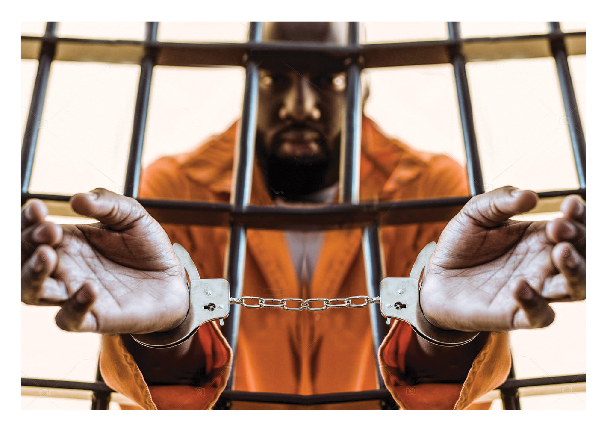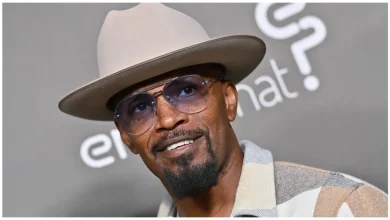Modern Day Slavery – African American News and Issues

Many people forget that the American Prison System (APS) is a business. In fact, The Fordham Journal of Corporate and Financial Law noted that over $74 billion each year is generated by the APS, funded by the government and by taxpayers. They also mentioned that each inmate can bring in $6,000 to $14,000 in revenue. In the APS, they benefit off cheap labor and make money off of Black and brown people, since we are the main ones that are getting locked up. This is modern day slavery.
What needs to be done to address the racial inequality in the justice system? In order to find a solution, we must first acknowledge that a problem exists. It is no secret that the criminal justice system locks up more Black people than White people. This is nothing new, but it continues to be a problem in our communities.
We have heard about different kinds of reforms, policies, and legislation taken place all over the world, but not enough attention has been aimed at fixing the racial inequities that lie within the criminal justice system. There are several reasons why this problem can no longer exist. One being that it is breaking up Black families.
In a report by The Atlantic, they discussed how over the years the Black family dynamics have shifted and how “seventy-two percent of Black children are born to unmarried women.” Prior to 1960, this number was lower and more Black women were married before they had children, but after the 1960’s things started to get worst as finding jobs were harder due to the loss of factory jobs, and other industrious jobs for Black men. Coupled with “legal discrimination” along with civil rights, this is where the broken Black families started.
When Blacks get locked up, this can create a domino effect that impacts many elements. Some of the individuals who meet this unfortunate fate, can’t afford the bail money, may not have money for representation, and may not be knowledgeable about the crimes against them. According to Pew Research, Black people are more likely to get locked up than Hispanics or Whites. In addition, “The Black imprisonment rate at the end of 2018 was nearly twice the rate among Hispanics (797 per 100,000) and more than five times the rate among Whites (268 per 100,000).”
Additionally, “Black men are especially likely to be imprisoned. There were 2,272 inmates per 100,000 black men in 2018, compared with 1,018 inmates per 100,000 Hispanic men and 392 inmates per 100,000 white men.” If this doesn’t scream racial disparity and inequality, then I don’t know what else will.
When Black men are locked up it can destroy families. It also can create a generational cycle that is hard to break. If you take away the Black man from the household, then the children have no father figure to help raise them. There is also one less income in the household now creating financial obstacles for that family. These obstacles include the children possibly not having necessities such as food, clothes, and adequate housing. Being incarcerated also impacts the prisoner once they are released from prison. It can be hard finding a job that will hire you with a record, and it can be difficult trying to assimilate back into the “real world,” after being away so long. This could lead to reimprisonment due to the life altering changes.
The Sentencing Project stated, “It is clear that the outcome of mass incarceration today has not occurred by happenstance but has been designed through policies created by a dominant White culture that insists on suppression of others.” This system was designed for Black people, especially our Black men. If you lock them up, then they can’t achieve much with a record, which keeps them suppressed in society. By locking them up, they also can’t reproduce, which means the race slowly dwindles in society until it is extinct. Unless something is done to fix the crooked criminal justice system, this is a generation cycle that will never break.
In an interview with a former Adult Probation Officer, we discussed some of the issues within the criminal justice system, as well as steps that can be taken to solve some of these challenges. We also learned what needs to be done to keep our youth on the right path.
Afram News: What issues do you think lie within the criminal justice system?
Adult Probation Officer: The Criminal Justice System includes police, courts, and corrections. Each entity comes with its own unique set of issues. My experience has come from the corrections side of the CJ System with interactions with Police and reporting to the courts. There are issues with accountability of probationers, the most discussed issue “bonds”, and lack of staff, with all three entities to name a few. Yes, these issues can be fixed.
Afram News: What is the most challenging thing you’ve seen as a probation officer?
Adult Probation Officer: Working with a Client who doesn’t want help, and working for a department that moves from being client driven to data driven.
Afram News: Did you have repeat offenders?
Adult Probation Officer: Unfortunately, yes. For some clients, it was like a repetitive cycle. It may be 6 months for some, a year to two years, and they would be back on probation.
Afram News: What do you think can be done regarding our youth to keep them on the right track?
Adult Probation Officer: It has to start at home with the youth. Parents must be involved in what their children are learning and doing. Education is extremely important. I had many adult clients over the years who were unable to read and sometimes write. It’s important to teach youth how to interact with others in the community. My parents often told me, “An idle mind is the devil’s workshop.” Keep the youth involved in positive and productive activities where they can develop and grow. We as a community need to also support our youth. It doesn’t matter where you are from, what’s important is what you do with your life.
Afram News: Why do you think there are more Blacks than Whites getting locked up and in trouble? Why do you think the disparity exists?
Adult Probation Officer: I don’t have the specific statistics; however, with the high-risk caseloads I supervised over numerous years, there has been more Blacks than Whites. There is systemic racism in laws, policies, and assessments. There are a majority of Black clients who can’t afford hired legal representation versus White clients who are able, and their disposition may end in dismissal or a lesser sentence or reduce charge. I’m not discrediting appointed attorneys because there are some good ones out there and the Harris County Public Defender’s Office (established in 2010) attorneys do an excellent job defending indigent clients.




